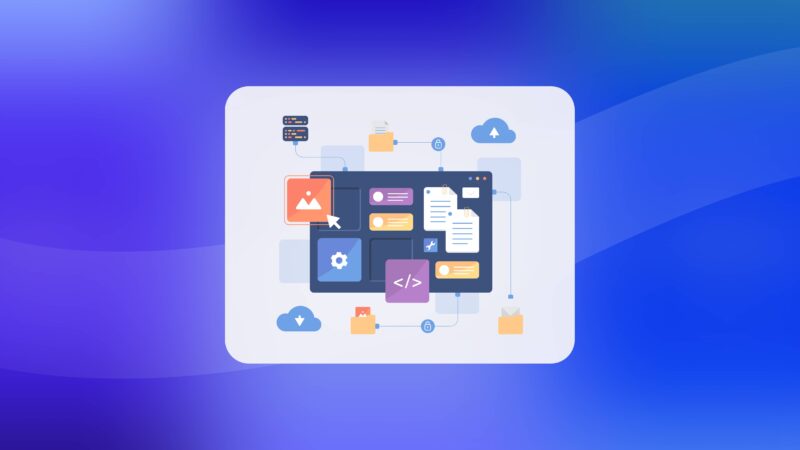Role of Player Behavior Analysis in Game Development

Understanding How Players Interact With Your Game
In the dynamic world of game development companies, success hinges on the ability to create experiences that captivate and engage players. As technology continues to evolve, so do player expectations, making it essential for developers to gain insights into how players interact with their games. This is where player behavior analysis steps in, serving as a powerful tool that not only enhances the gaming experience but also drives the success of the industry as a whole.
In this article, we will delve deep into the role of player behavior analysis in game development. We’ll explore how this multifaceted discipline can be harnessed to create better games, foster player engagement, and ultimately shape the future of gaming.
The Evolution of Player Behavior Analysis
Before we delve into the significance of player behavior analysis, it’s important to understand its evolution. In the early days of the gaming industry, developers had limited means to gather data about player interactions. However, with the advent of digital gaming and online connectivity, the landscape changed dramatically.
- Data Collection: The first step in player behavior analysis is data collection. In the past, this was done manually through surveys and focus groups. Today, it’s automated through in-game telemetry, tracking everything from player movements and decisions to playtime and purchases.
- Big Data and AI: With the rise of big data and artificial intelligence, game developers now have the tools to process and analyze vast amounts of player data. This has opened up new possibilities for understanding player behavior at a granular level.
Understanding Player Behavior
Player behavior analysis isn’t just about collecting data; it’s about extracting meaningful insights from it. Here are some key aspects of player behavior that developers focus on:
- Player Preferences: By analyzing player choices and interactions, developers can gain insights into what players enjoy most in a game. This information can be used to tailor future content and updates to better suit player preferences.
- Churn Prediction: Understanding when and why players stop playing a game (churn) is crucial. Player behavior analysis can help identify the factors leading to churn, enabling developers to take corrective actions.
- Monetization Strategies: For many game developers, revenue generation is a primary goal. Analyzing player behavior helps optimize monetization strategies, such as in-app purchases, ads, or premium content.
- Balancing and Difficulty: Developers use player data to balance the difficulty of their games. If a level or mission is too easy or too hard, player behavior analysis can highlight these issues and guide adjustments.
- Community Building: Successful games often have strong player communities. Understanding player behavior can aid in community building efforts, such as organizing events or fostering player interaction.
Enhancing Player Engagement
One of the ultimate goals of player behavior analysis is to enhance player engagement. Engaged players are more likely to stay loyal to a game and become advocates, driving organic growth. Here’s how player behavior analysis contributes to this goal:
- Personalized Experiences: By tailoring the game experience to individual players, developers can make players feel more connected to the game. This can include personalized quests, rewards, or in-game challenges based on player preferences.
- Feedback Loops: Analyzing player behavior allows developers to implement feedback loops. These can include acknowledging player achievements, addressing player complaints, and constantly improving the game based on player feedback.
- Content Updates: Player behavior analysis helps developers understand which types of content are most engaging. This insight guides the creation of new levels, characters, and storylines that resonate with players.
- Retention Strategies: Identifying factors that lead to player churn enables developers to implement targeted retention strategies. These may include special events, rewards for returning players, or improved tutorials for new ones.
Player behavior analysis, when harnessed effectively, can lead to a virtuous cycle of engagement, where players become more deeply invested in the game QA solutions, providing even more data for analysis, and driving continuous improvements.
Ethical Considerations in Player Behavior Analysis
While player behavior analysis offers tremendous benefits, it also raises important ethical questions. The collection of extensive player data, especially in online multiplayer games, has sparked concerns about privacy and data security. Developers must navigate this landscape carefully, ensuring that player data is handled responsibly and transparently. Transparency in data collection, clear opt-in processes, and robust data protection measures are essential to building player trust.
Additionally, the use of player behavior analysis should not be solely focused on monetization. Players should feel that their gaming experience is being improved rather than manipulated for financial gain. Ethical game development practices are crucial for the long-term success and reputation of the industry.
The Future of Player Behavior Analysis
As technology continues to advance, the role of player behavior analysis in game development is poised to grow even more significant. Here are some emerging trends and possibilities:
- Predictive Analytics: Advanced predictive analytics can anticipate player behavior, allowing developers to proactively address issues or deliver personalized content before players even realize they want it.
- Real-time Feedback: With the advent of cloud gaming and low-latency connections, real-time player behavior analysis will become more prevalent. Developers can use this data to make instant adjustments and improvements to the gaming experience.
- AI-Driven NPCs: Non-player characters (NPCs) in games can become more realistic and responsive by leveraging AI-driven player behavior analysis. NPCs can adapt to individual player styles and preferences, making the game world feel more alive.
- Cross-Platform Analysis: With games spanning multiple platforms, from consoles to mobile devices, analyzing player behavior across these platforms will become increasingly important. This holistic view of player behavior can inform cross-platform strategies.
Conclusion
In the world of game development, understanding how players interact with your game is not a luxury; it’s a necessity. Player behavior analysis has evolved from rudimentary data collection methods to a sophisticated discipline that can shape the future of gaming. By harnessing the power of data, developers can create more engaging, personalized, and ethical gaming experiences.
As technology continues to advance, gaming analytics solutions will play an even more significant role in game development. The games of the future will not only be more immersive but also more responsive to individual player needs and preferences. By embracing player behavior analysis and adhering to ethical practices, developers can continue to push the boundaries of what gaming can be, ensuring its continued growth and success.
Author: Muthamilselvan is a passionate Content Marketer and SEO Analyst. He has 8 years of hands-on experience in Digital Marketing with IT and Service sectors. Helped increase online visibility and sales/leads over the years consistently with my extensive and updated knowledge of SEO. Have worked on both Service based and product-oriented websites.





